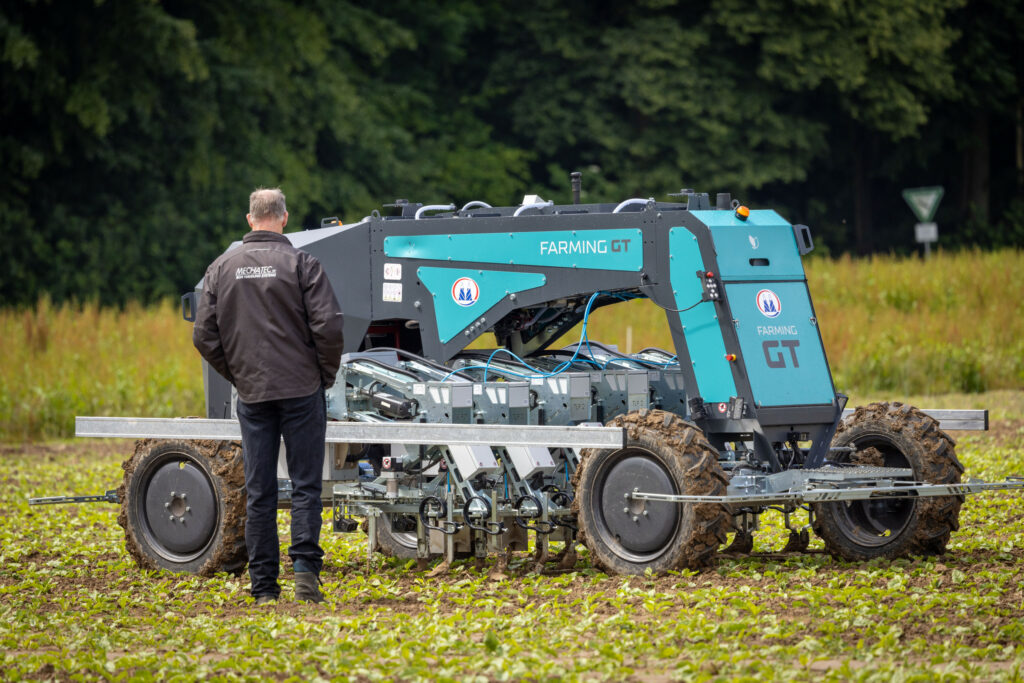How two German farmers view their field robots

At the DLG-FieldTage event in Erwitte, Future Farming hosted a debate with two German arable farmers about their experiences with field robots. The necessity of autonomous robots to keep organic farming profitable is so significant that they accept the initial challenges.
In collaboration with the trade fair organization DLG, Future Farming held a workshop on the technological advancements of field robots, their availability, and practical experiences. In the final part, two German arable farmers shared their experiences with field robots in a public debate. Here’s a brief impression.
Why robots?
Maximilian: “We are increasingly struggling to find good tractor drivers. Additionally, the labor costs of skilled workers are skyrocketing. That’s why we want to perform tractor tasks as autonomously as possible. We also notice that autonomous work is often more precise. For example, a tractor driver might drive faster than is good for the quality of the work.”
Experiences
Maximilian: “We use the AgXeed for relatively simple tasks where not much can go wrong, such as tilling, harrowing, and cultivating. I wouldn’t dare to attach a weeder to the AgXeed because there’s still too little control over whether the weeder performs well from a distance. Too much can go wrong with significant consequences for the crops and yield.
Ideally you want to work with larger plots
“I’m not saying that everything went perfectly during our first two years (2022 and 2023) with the AgXeed AgBot. Preparing the robot for a plot takes time regardless. Initially, it took us around two hours. So ideally, you want to work with larger plots to achieve a higher efficiency. And for example, if some straw remains on part of the field after the grain harvest due to rain, and you want to perform stubble cultivation on the cleared part with the robot, you need to re-enter the field boundaries before the robot can start. Additionally, precisely following contours didn’t go very well at first, but that has since improved.”
Text continues below picture

Why robots?
Jan Wilhelm: “We grow organic sugar beets, which need to compete in price with conventional growers. Hand weeding is out of the question, not to mention the difficulty of finding personnel for this task. To keep costs under control, maximum automation is necessary. Specialized autonomous robots are the best candidates for this.”
Experiences
Jan Wilhelm: “We first tried the FarmDroid FD20 for sowing and weeding but stopped after two years. The robot had many error messages, which consumed a lot of time. Our varying soil types (clay and light soil in a single field) caused the robot to wobble, leading to seeds not being placed exactly, which in turn affected subsequent weeding operations. The robot assumes the coordinates of where each seed was placed. You also need an extremely flat seedbed as a precondition.
We learned to choose specialized tools
“If the robot can only handle 2 hectares per day, you have to prepare small 2-hectare sections at a time, which is not logistically efficient. We learned to choose specialized tools and robots. Now, we use one specifically for weeding, the Farming Revolution Farming GT. An autonomous tractor with a weeder will never perform as well as a robot designed entirely for its task.”
Join 17,000+ subscribers
Subscribe to our newsletter to stay updated about all the need-to-know content in the agricultural sector, two times a week.



